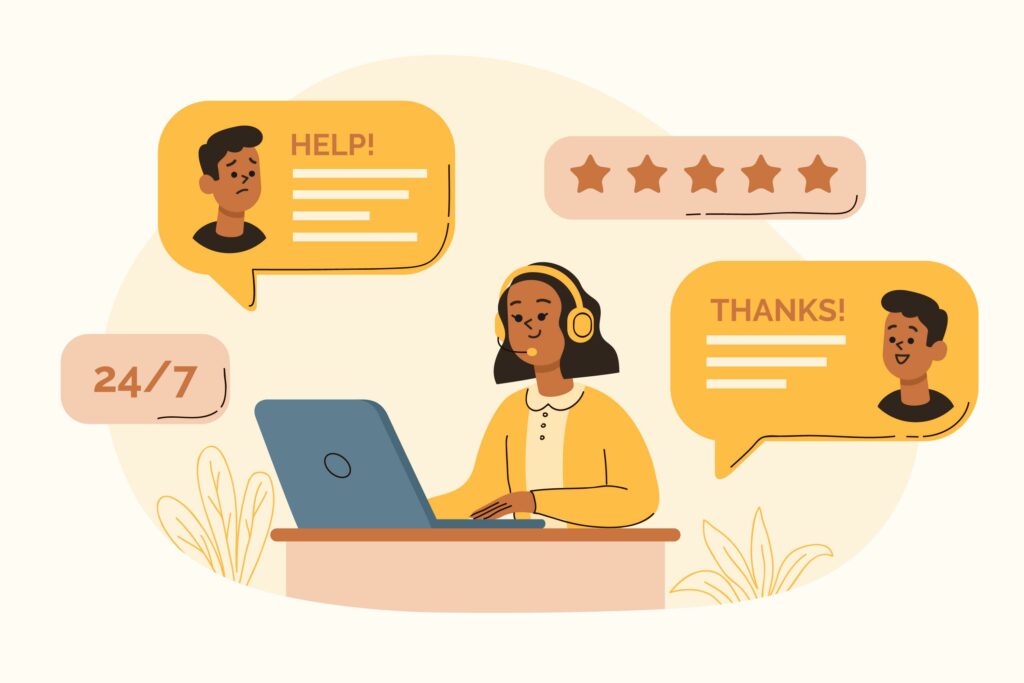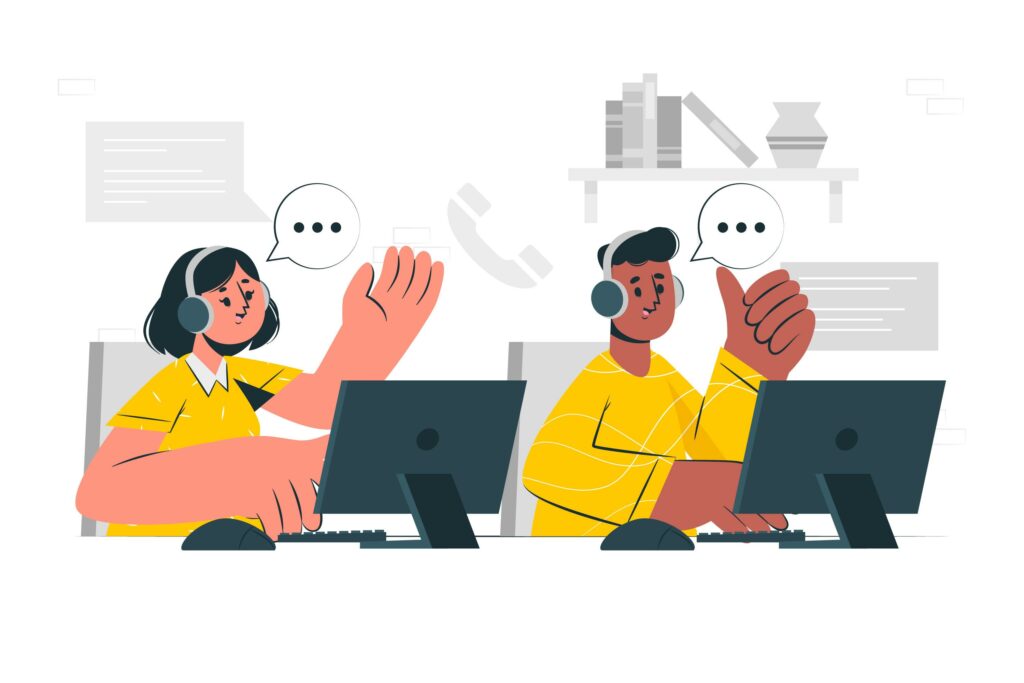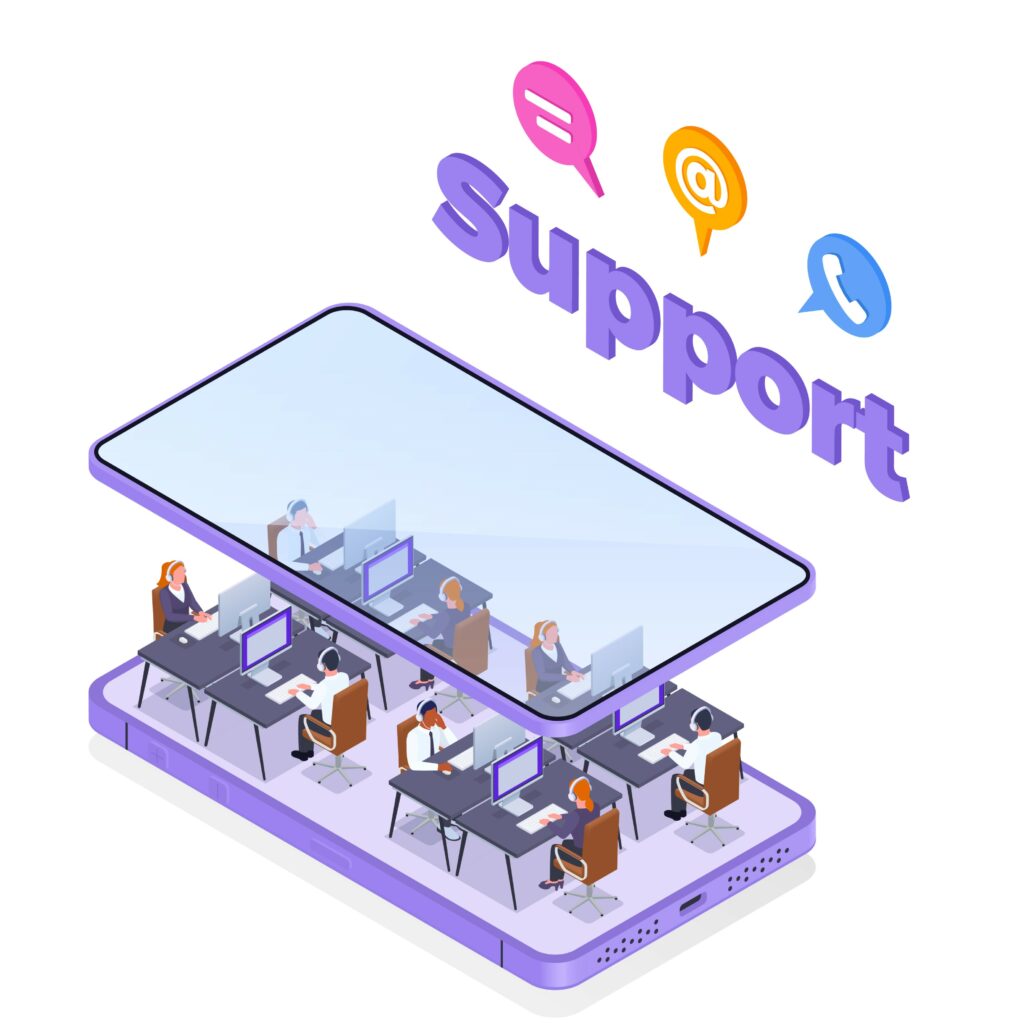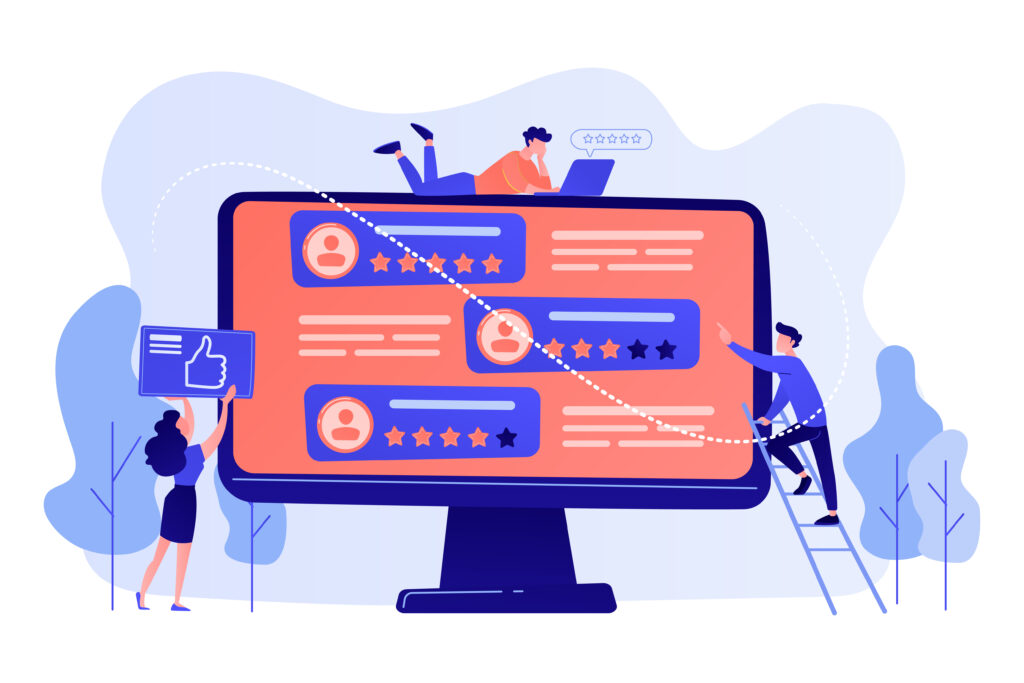Importance of Customer Service Best Practices
It is important to learn about the best customer service best practices. Customer service involves offering support and help to customers before, during, and after they buy a product or service. This encompasses tasks like responding to inquiries, addressing complaints, engaging with customers, following up on issues, and providing advice. Customer service can be provided through multiple channels, including phone, email, live chat, social media, and face-to-face interactions.

Important Aspects of Effective Customer Service
- Personalization: Tailoring interactions to suit the specific needs and preferences of each customer. This involves recognizing individual preferences, history, and unique circumstances to enhance their experience and satisfaction.
- Empathy: Displaying genuine understanding and empathy towards customers’ feelings, concerns, and perspectives. It involves actively listening, acknowledging emotions, and demonstrating compassion to build rapport and trust.
- Responsiveness: Providing timely and efficient resolutions to customer issues and inquiries. Being responsive entails acknowledging customer queries promptly, keeping them informed of progress, and ensuring timely follow-up until the issue is resolved satisfactorily.
- Product Knowledge: Possessing a comprehensive understanding of the product or service offered. This includes knowing its features, benefits, limitations, and troubleshooting methods. Product knowledge enables representatives to offer accurate information and effective solutions to customer inquiries and problems.
- Professionalism: Conducting interactions with professionalism, maintaining respect, courtesy, and a positive demeanor. It involves communicating clearly and professionally, adhering to company policies and ethical standards, and representing the brand in a favorable manner.
Types of Customer Service

- Phone: This traditional method offers direct, personalized interaction where customers can speak directly with a representative. It provides a human touch and allows for detailed discussions to resolve issues comprehensively.
- Text: This channel provides convenient and swift assistance, allowing customers to send messages and receive quick responses. It’s ideal for resolving simple inquiries or providing brief updates, enhancing accessibility and responsiveness.
- Email: Known for its cost-effectiveness and structured format, email enables customers to articulate detailed concerns and receive thoughtful, well-considered responses. It’s suitable for complex issues that may require documentation or follow-up.
- Live Chat: This modern approach offers real-time support through instant messaging. It provides immediate responses to queries and issues, making it efficient for resolving problems swiftly while maintaining a digital record for future reference.
- In Person: A classic method that fosters personal, face-to-face interaction between customers and representatives. It builds rapport and trust through direct communication, particularly beneficial for complex or sensitive matters.
- Social Media: This platform facilitates public engagement and enables businesses to respond quickly to customer inquiries and concerns. It offers transparency and encourages interaction within a broader audience, enhancing customer satisfaction and brand reputation.
- Self-Service: Empowering customers to find solutions independently through resources like FAQs, knowledge bases, and troubleshooting guides. It reduces reliance on live support agents for routine inquiries, promoting efficiency and customer empowerment.
Importance of Customer Service

Customer service serves as a cornerstone of business success, playing a pivotal role in several key aspects that directly impact a company’s growth and reputation. Here’s how:
- Enhancing Brand Loyalty: Effective customer service builds trust and loyalty among customers. When customers receive prompt, helpful, and courteous assistance, they are more likely to develop a strong affinity for the brand. This loyalty translates into repeat business and positive word-of-mouth recommendations.
- Retaining Current Customers: Providing exceptional customer service ensures that existing customers remain satisfied and continue to support the business. By addressing concerns promptly and resolving issues effectively, companies can prevent customer churn and maintain a stable customer base.
- Generating Referrals: Satisfied customers are inclined to recommend the brand to friends, family, and colleagues. Positive experiences with customer service create advocates who willingly promote the company’s products or services, leading to organic growth through referrals.
- Boosting Customer Lifetime Value: Customer service plays a crucial role in maximizing the lifetime value of customers. By consistently delivering superior service experiences, businesses can increase customer retention rates and encourage repeat purchases, thereby maximizing the revenue generated from each customer over their lifetime.
- Setting Businesses Apart from Competitors: In a competitive marketplace, exceptional customer service can serve as a powerful differentiator. When companies prioritize customer satisfaction and invest in delivering outstanding service, they stand out from competitors who may not prioritize the customer experience as effectively.
Common Challenges in Delivering Excellent Customer Service
Customer service agents encounter various hurdles when striving to provide outstanding experiences. Here are some prevalent challenges along with potential solutions:

Ineffective Communication
Challenge: Representatives may struggle with active listening, empathy, or maintaining a personable tone.
Solution:
- Provide training on active listening techniques, empathy building, and the use of warm, friendly language.
- Encourage the use of open-ended questions, summarization of customer concerns, and speaking in a warm and inviting manner.
Slow Response Times
Challenge: Customers anticipate swift answers and prompt issue resolution.
Solution:
- Establish explicit response time goals for emails, calls, and inquiries.
- Equip representatives with efficient tools and resources to expedite problem-solving.
- Implement automation for routine tasks to enhance response speed.
Product Knowledge
Challenge: Customers expect representatives to possess in-depth knowledge about products.
Solution:
- Conduct comprehensive and continuous training sessions for representatives covering all aspects of the offerings.
- Utilize knowledge bases, FAQs, and quick reference materials to assist representatives in finding answers quickly.
Representative Empowerment
Challenge: Representatives may lack the authority to make decisions.
Solution:
- Grant representatives more decision-making autonomy within clearly defined parameters.
- Ensure managers are available to handle escalated issues that representatives cannot resolve independently.
Additional Challenges Include:
- Dealing with Difficult Customers: Provide training to help representatives effectively manage challenging situations.
- Managing High Call Volumes: Implement efficient call management strategies and automate routine tasks to handle peak periods.
- Ensuring Consistency Across Channels: Maintain uniformity in customer service quality across all communication channels.
- Adapting to Evolving Customer Expectations: Proactively adjust customer service strategies and embrace a cohesive omnichannel approach to meet changing demands.
These strategies aim to equip customer service agents with the tools and skills necessary to overcome common challenges and deliver exceptional customer experiences consistently.
Customer Service Best Practices

1. Product Mastery
Agents should possess a comprehensive understanding of the product or service, going beyond basic features to include potential challenges and solutions. This expertise enables agents to effectively address customer inquiries, build trust, and enhance the overall customer experience.
2. Customer Understanding
It’s essential to understand your customers—why they chose your product, their preferences, and their feedback about your company. Encourage your customer support team to utilize helpdesk software that allows them to document, analyze, and derive insights from customer interactions. This enables personalized and meaningful engagements with customers.
3. Train and Empower Your Team
Achieving exceptional customer service hinges on training and empowering your customer support team. This entails hiring the right people, nurturing them, and equipping them with the tools, knowledge, and authority needed to effectively resolve customer issues.
Select and Support Your Team
- Choose the Right People: Build your customer support team with individuals who are passionate about delivering exceptional service and possess the requisite skills and knowledge.
- Support Them: Foster a positive work environment that promotes growth, recognition, and rewards, boosting morale and motivation for better customer interactions.
Provide Comprehensive Training on Customer Service Best Practices
Empathy: Educate agents on understanding and empathizing with customers’ concerns and viewpoints.
Patience: Instill techniques for maintaining composure and patience, especially in challenging situations.
Consistency: Ensure agents uphold consistent service standards and protocols across all interactions.
Equip Agents with Essential Tools, Knowledge, and Authority
- Tools: Supply agents with efficient tools and technology to streamline issue resolution.
- Knowledge: Offer thorough training on product details and troubleshooting methods to address customer inquiries effectively.
- Authority: Grant agents the autonomy to make decisions and take prompt action to resolve customer concerns swiftly and efficiently.
4. Enhance Communication Skills
Effective communication is crucial for delivering exceptional customer service and requires continuous improvement within your customer support team.

Engage Customers Personally and Friendly
Interact with customers in a personable and approachable manner to create a positive connection. Avoid overly formal language that may depersonalize interactions and instead strive for a conversational tone that resonates with customers.
Train Representatives on Effective Communication
Provide training to representatives on using positive language, ensuring clear communication, and maintaining a respectful tone throughout interactions. Discourage the use of passive-aggressive language, slang, colloquialisms, and technical jargon, which can hinder effective communication.
Handling Uncertainty and Mistakes
Acknowledge situations where immediate answers may not be available and commit to finding solutions promptly. This demonstrates dedication to resolving issues and reinforces trust with customers.
Admitting mistakes when they occur helps build trust and allows your company to take proactive steps to rectify issues promptly, refocusing customer attention on problem resolution.
Closure and Follow-up
Ensure that each customer interaction concludes with a clear resolution and a summary of agreed-upon actions. This demonstrates your commitment to accuracy and respects the customer’s time.
Follow up with customers after issue resolution to verify that their concerns were addressed satisfactorily. This can be done through phone calls, personalized emails, or feedback surveys to gather valuable insights and further enhance service delivery.
5. Enhance First Touch Resolution

First touch resolution (FCR) stands as a critical metric in customer service, reflecting the capability to resolve issues during the initial interaction. Elevating FCR contributes to heightened customer satisfaction, reduced support expenses, and enhanced overall service quality.
Analyze Data to Identify Challenges
- Review data to pinpoint reasons why issues were not resolved on the first attempt. This may include analyzing call logs, customer feedback, and performance metrics to identify common obstacles.
- Examine patterns and trends in unresolved issues to determine if there are specific areas or types of queries that frequently require follow-up interactions.
Utilize Insights for Process Improvement
- Utilize data findings to streamline processes, ensuring all necessary information is gathered upfront consistently. This might involve revising scripts, checklists, or workflows to include all critical information and steps needed for resolution.
- Implement changes based on the insights gained from data analysis to address root causes of low FCR. This could include updating training programs, improving knowledge base resources, or adjusting team workflows.
- Foster a culture of continuous improvement by regularly reviewing FCR data and making iterative adjustments to processes and procedures. Encourage feedback from representatives on the front lines to gain practical insights into potential improvements.
By focusing on enhancing FCR, organizations can improve their customer service efficiency, leading to more satisfied customers and lower operational costs.
6. Provide Omnichannel Support
Delivering outstanding customer service necessitates offering support through various channels, ensuring consistency and accessibility. Here are the essential components of omnichannel support:
Support Across Multiple Channels
- Phone: Provide direct support via phone for customers who prefer verbal communication.
- Email: Offer written support through email for customers who prefer asynchronous communication.
- Chat: Provide live chat support for real-time assistance to customers.
- Social Media: Offer support through social media platforms for customers who prefer online interactions.
- In-Person: Provide face-to-face support for customers who prefer personal interactions.
- Live Chat: Utilize live chat to offer immediate assistance to customers seeking real-time support.
7. Continuously Improve Through Data
To enhance customer service continually, it’s crucial to utilize data collection, customer feedback, and data-driven decision-making processes.

Data Collection:
Collect comprehensive data from customer service interactions, including call logs, chat transcripts, and email correspondence. Analyze the gathered data to identify trends, patterns, and areas that require improvement.
Customer Feedback:
Gather feedback from customers through surveys, reviews, and other channels to understand their preferences and expectations. Analyze customer feedback to pinpoint pain points, expectations, and satisfaction levels accurately.
Data-Driven Decision Making:
Utilize insights derived from data analysis to make informed decisions regarding customer service enhancements.
Implement improvements based on data findings, such as optimizing processes, refining training programs, and allocating resources more efficiently.
[Want to learn more about Customer Service Best Practices? Click here to reach us.]
Conclusion
Exceptional customer service is not merely a value-add; it is a fundamental necessity. By implementing best practices such as effective communication, timely responses, thorough product knowledge, and empowering representatives, organizations can significantly enhance their customer interactions.
Elevating first touch resolution and providing comprehensive omnichannel support further ensure that customers’ needs are met promptly and effectively, regardless of the medium.
Moreover, leveraging data analytics to refine processes and embracing technology to streamline operations are critical strategies that enable continuous improvement in service delivery. These practices not only improve customer satisfaction but also foster loyalty, reduce operational costs, and create a positive brand reputation.
Outstanding customer service hinges on a commitment to understanding and addressing customer needs with empathy, efficiency, and consistency. Companies like Bobcares exemplify these principles through their dedicated customer support services, which help businesses achieve high standards of customer satisfaction. Bobcares offers tailored support solutions, ensuring that businesses can focus on their core activities while maintaining exceptional service quality.
By embedding these best practices into the core of their operations and partnering with experienced service providers like Bobcares, businesses can create lasting relationships with their customers, driving long-term success and growth.







0 Comments